A Doubtful Adventure
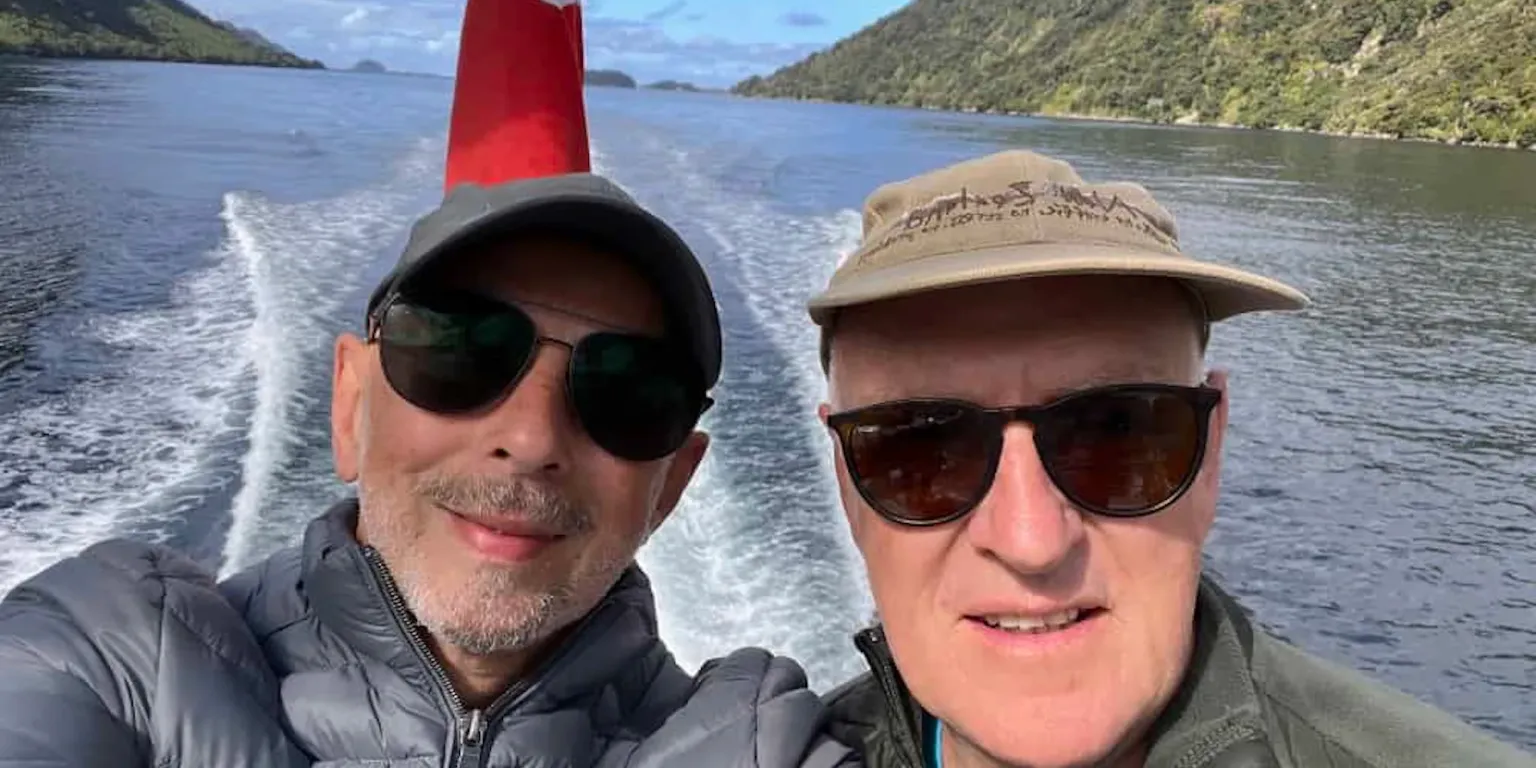
Te Anau to Queenstown via Doubtful Sound 15 - 18 January 2023
All the tags used in this post:
There is a myth that there are no dangerous native predators in New Zealand. Anyone perpetuating this myth has not met the female Austrosimulium autralense known to New Zealanders as sand flies. These pesky minuscule biters may leave one alone, bite leaving a slightly annoying itch or occasionally leave their victim with blisters the size of strepsils. The male of the species is vegetarian and therefore not any threat to humans but fertile females require blood for protein. Unfortunately Johnny had an encounter with some rather randy females in the shower on the last day of the family hui at Te Koawa Lodge who took advantage of his bare feet. We add this detail at this juncture as it has influenced our travel decisions ever since.
Leaving the lodge we travelled to Te Anau, a small tourist town on the edge of the stunningly beautiful Lake Te Anau, where native bush covered mountains rise straight from the water.
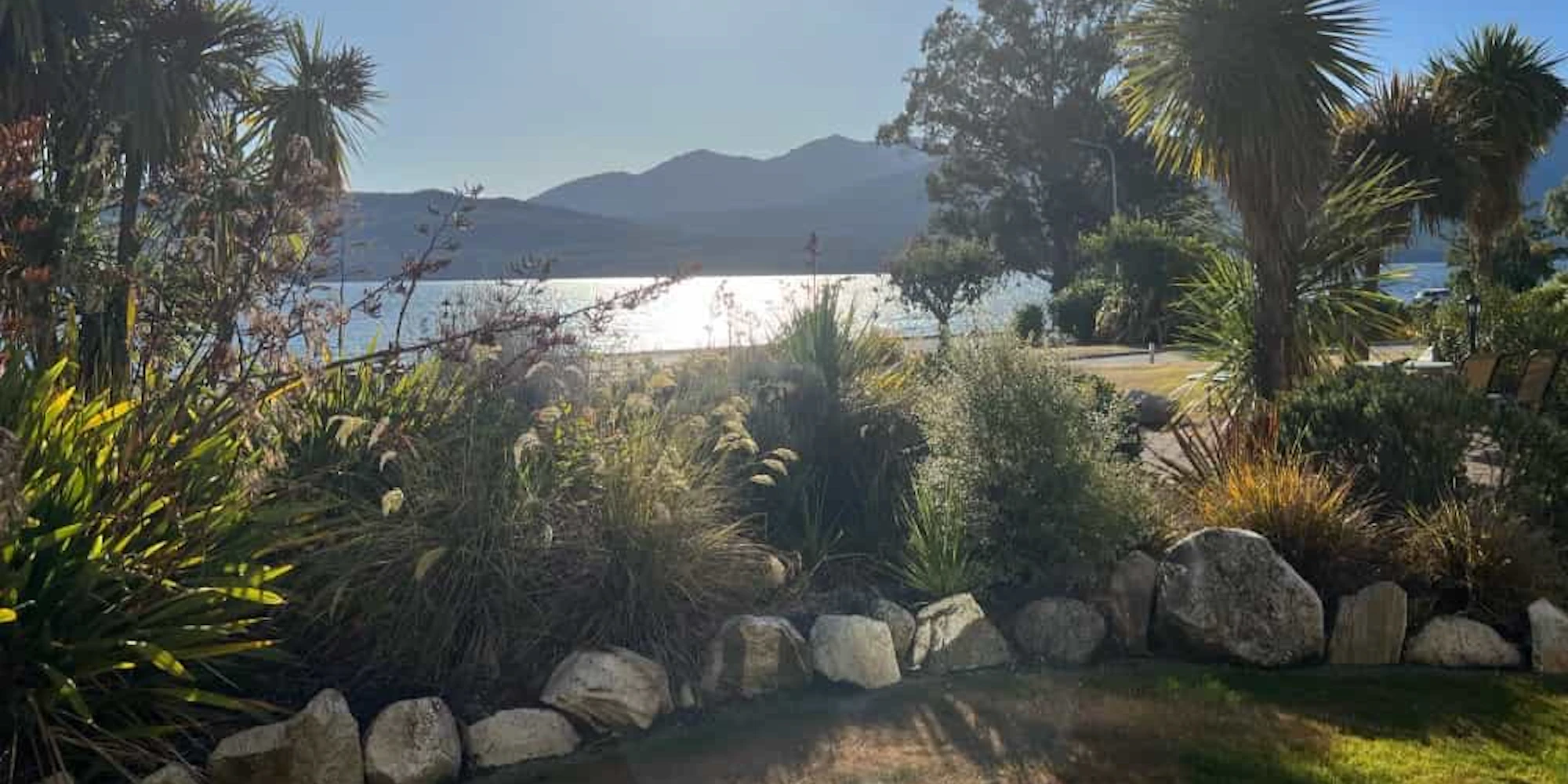
Having pre-booked our Airbnb accommodation we were rather alarmed to find that it was in the condition the last guests had left it in, complete with unmade beds and unwashed towels and that the owner was uncontactable. Full credit to Airbnb; they refunded our payment in full on the same day. We were relieved to find accommodation in the spotlessly clean and spacious Fiordland Lakeview Motel and Apartment on a very hot afternoon. By this time Johnny’s feet were beginning to show signs of a more severe reaction than normal to the sandfly bites and the helpful proprietors of the motel provided us with a bucket to soak his feet in ice-cold water; a temporary relief.
Like most places in the world New Zealand is still in post-covid recovery mode. This is most obvious in the hospitality industry and tourist centres like Te Anau are really suffering from the shortage of staff so common back home in the UK. Shortages of migrant staff and unaffordable rents are seen as barriers to full productivity; for the tourists, like us, this means there are fewer choices for eating and most venues have reduced operating hours. This did not distract from our enjoyment of this idyllic spot.

We had planned to walk part of the Kepler Track as a final training round for our planned Routeburn walk but Johnny’s alarmingly swelling blisters caused us to rethink any plans for walking and so we booked the Doubtful Sound Wilderness Cruise with Realnz.
This 7 hour return journey required no walking and was a total delight from start to finish. Sailing from Lake Manapouri’s Harbour (yes, that’s its real name) to the West Arm of the lake then transferring to a coach for the drive over the 671m Wilmot Pass to arrive at Deep Cove on Doubtful Sound.
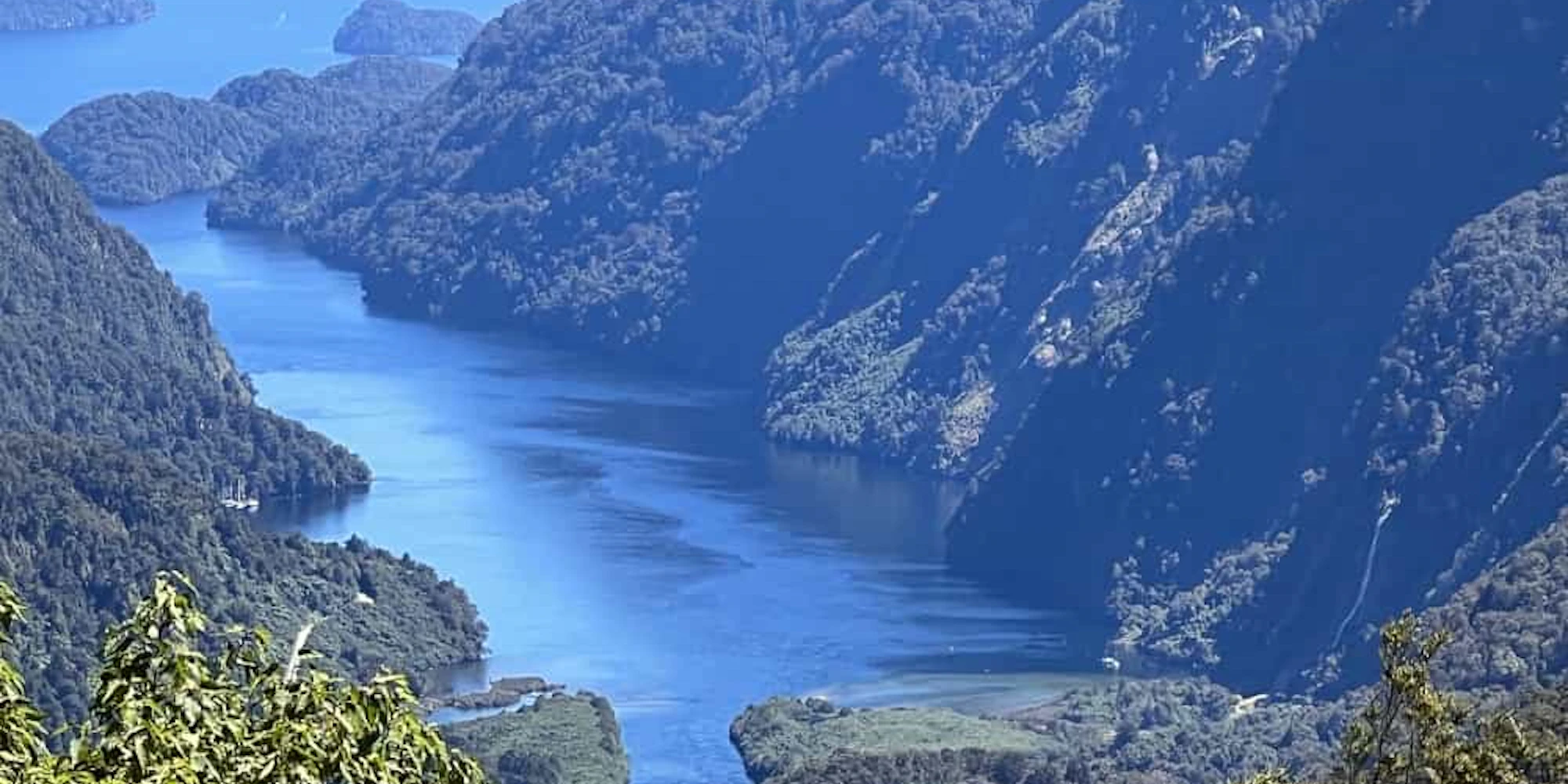
Doubtful Sound, which is actually a fiord, gets its name from the from Captain Cook, who in 1770 did not enter the inlet and marked it as “Doubtful Harbour”. This fiord is 421 metres deep and 40 kilometres long. The majestic mountains rise directly the sea and is home to some magnificent waterfalls, despite the lack of recent rain. The annual average rainfall is between 3,000 and 6,000 mm per annum so it is verdant and when the boat turned off its engines we were treated to a wonderful chorus of bird song.
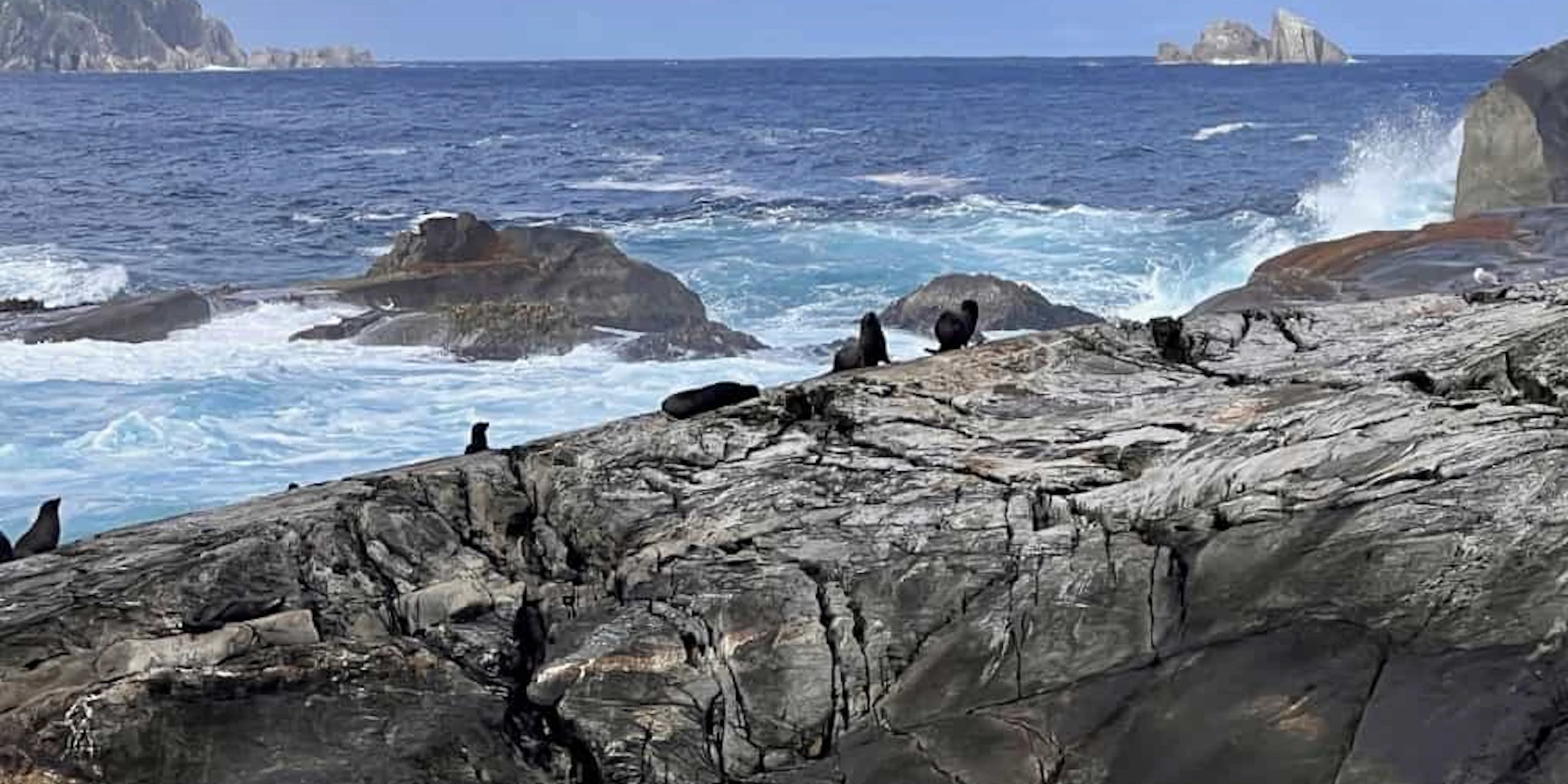
Doubtful Sound and Lake Manapouri are connected by the most amazing feat of engineering. In the 1950’s Comalco needed a source of electricity to convert raw bauxite from Nhulunbuy in Australia’s Northern Territory into aluminium. They entered into an agreement with the New Zealand government to site an aluminium smelter at Tiwai Point near Bluff, at the southern point of New Zealand’s South Island and bring the bauxite 4,831 km by sea. To create the electricity for the smelter a tunnel was drilled 230 metres down from Lake Manapouri to Doubtful Sound with a power station built underground powered by turbines. The once mighty Waiau river which drains Lake Manapouri was partially diverted for this project and Doubtful Sound now has a huge amount of fresh water. The project cost 16 lives in it’s construction and was officially commissioned in 1971 with the electricity being carried on lines held aloft by giant pylons for 146 kms to Bluff. The original plan had been to raise the level of Lake Manapouri but thanks to the leadership of the Save Lake Manapouri Campaign and the newly elected Prime Minister in 1973, Norman Kirk, this never happened. We wondered if such an environmentally altering project would happen today at all, and it certainly gave us plenty to think about including the casual way we use aluminium foil as we headed back over the Wilmot Pass and across Lake Manapouri.
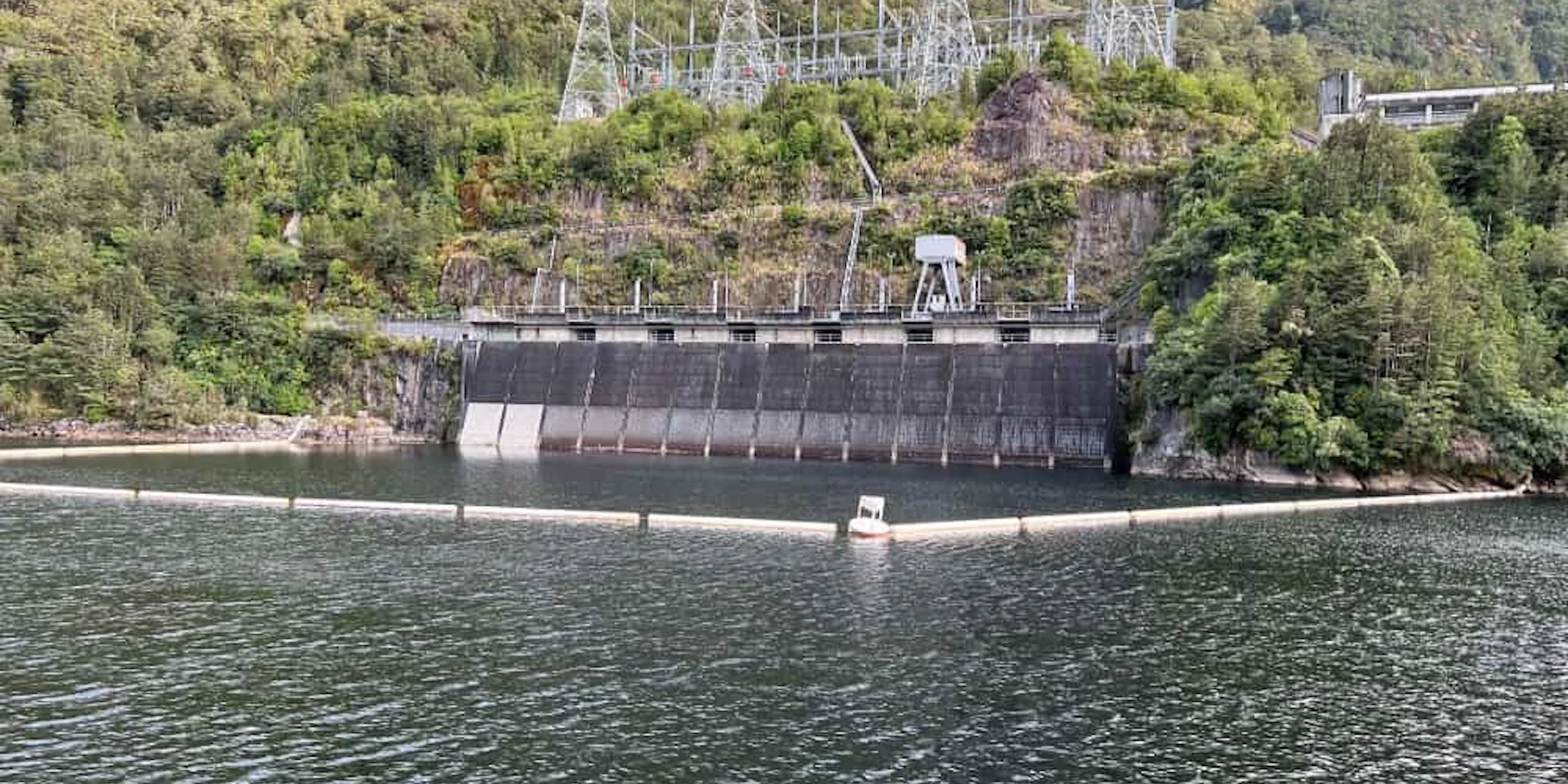
If asked to choose between a day in Milford Sound or Doubtful Sound we would certainly agree that this would be our pick.
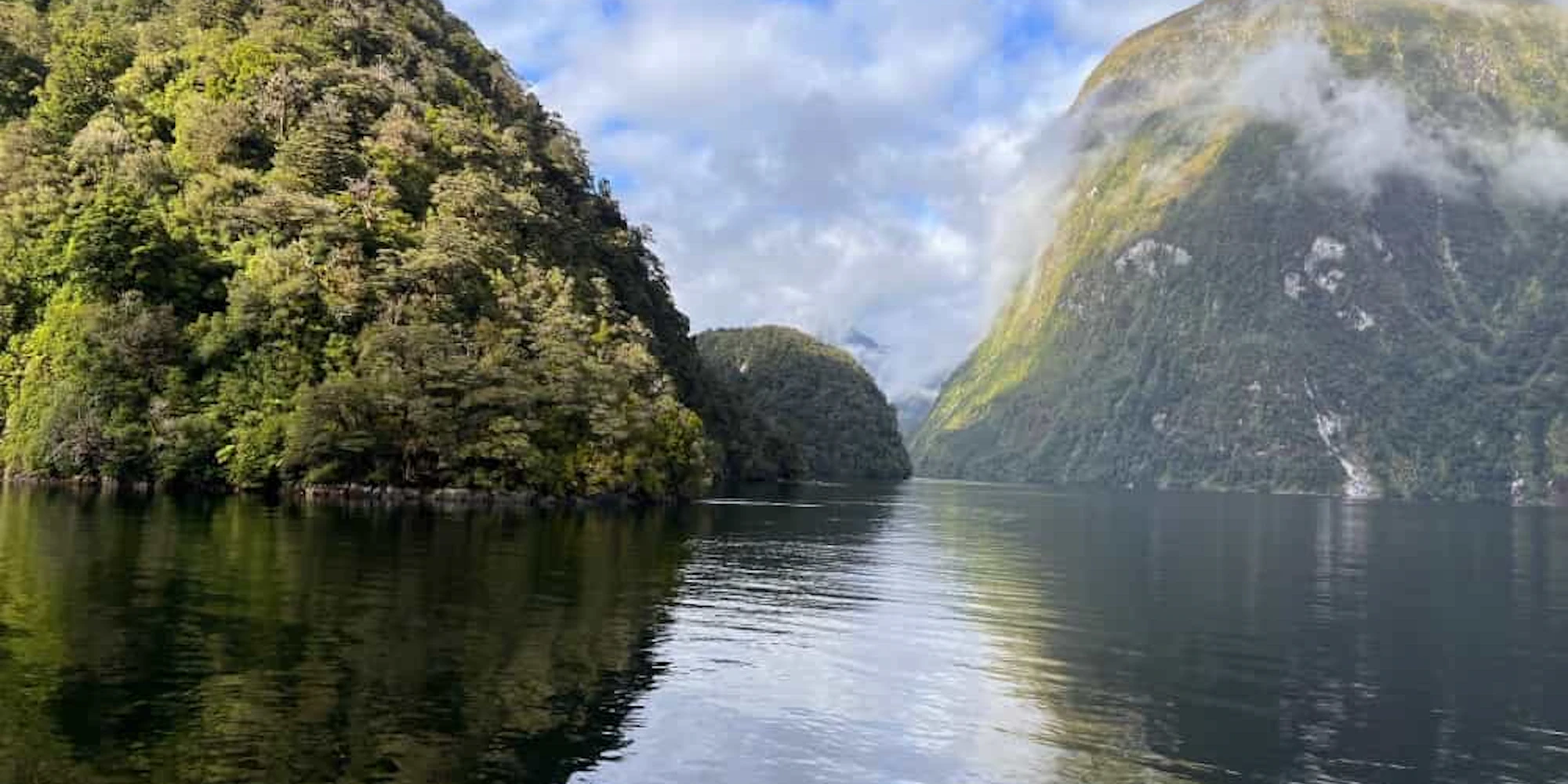
In 1851, when charting Doubtful Sound, Captain John Lort Stokes was tempted to name points Venom Point, Sandfly Bay and Bloodsucker Sound in honour of the sandflies. We were aware of the dangers and prepared with appropriate clothing and repellants and can report we received no bites on this amazing excursion. However Johnny’s previous bites were now very swollen. We headed to Queenstown for our next planned adventure, a three day hike across mountains on the Routeburn Track but the swollen blisters on Johnny’s feet made this look extremely doubtful.
Image Gallery
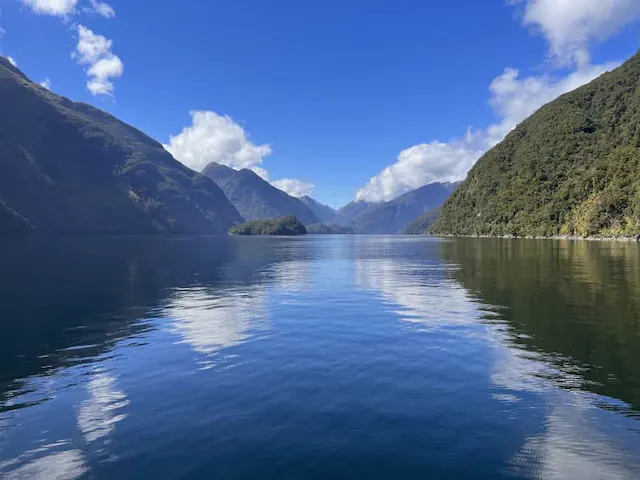
Ful view of the sounds from the back of the ship
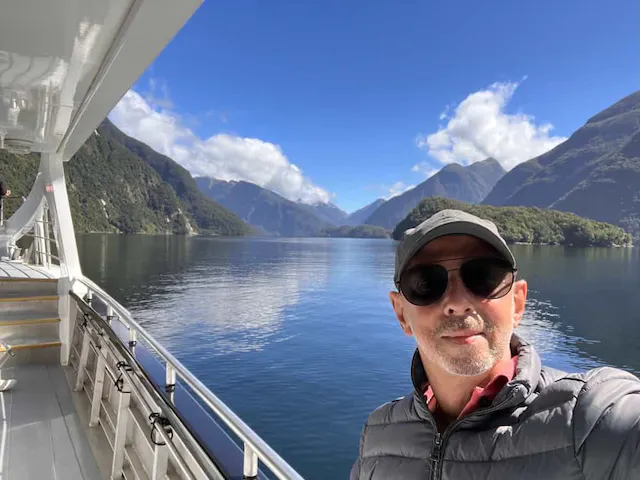
Johnny and Doubtful Sounds
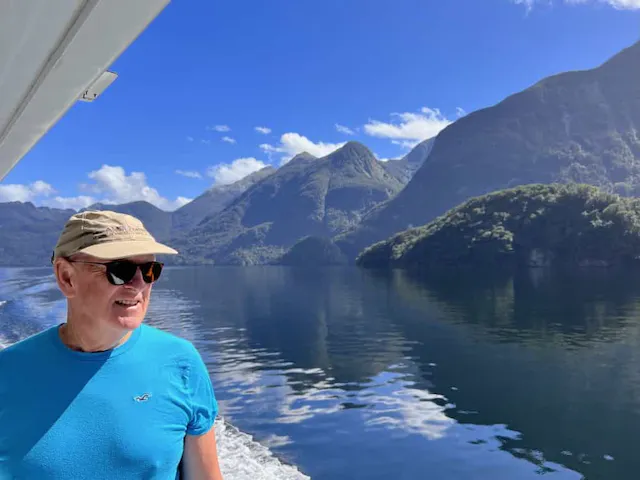
Leslie and Doubtful Sounds

Vast beauty in the Sounds